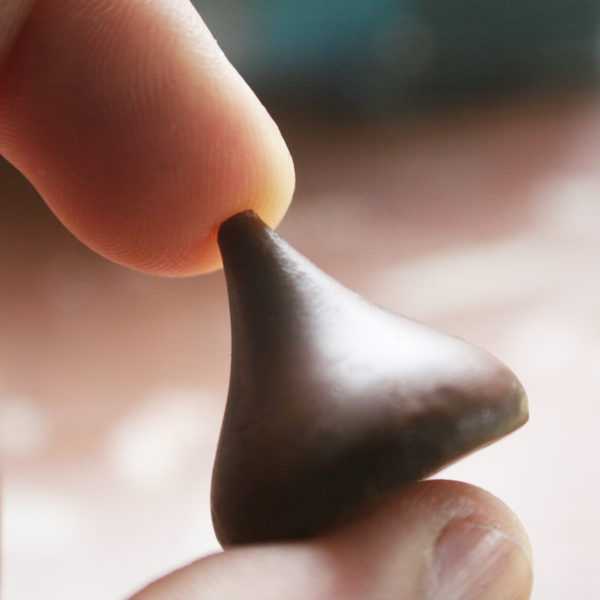LEGO: Not Just Another Brick in the Mall
How LEGO became the world’s favorite toy – and stayed that way.


It’s easy to understand why LEGO is the world’s most valuable toy brand, according to consultancy Brand Finance. There is something peculiarly satisfying about snapping two LEGO bricks together. LEGOs are also a wildly creative toy: One Copenhagen mathematician has calculated that just six bricks can be combined in more than 915 million ways.
But it wasn’t inevitable that we would end up in a world where there are at least 62 LEGO bricks for every person on earth. As with any great business, success was the result of character, circumstance, and strategy.
The company was founded in 1932 in Billund, Denmark, by Ole Kirk Kristiansen, a local carpenter. Kristiansen was by all accounts a very determined man, but like many determined people, not always a good listener.
In the 1920s, he had built a successful business as a carpenter and building contractor in rural Billund, where he and a fairly large crew built and restored buildings, and in between big projects, made ladders, ironing boards, and other useful objects for local farming families. But when the Depression hit, he had to lay off all but seven employees. With business down, he started making affordable wooden toys, figuring that parents would always find a way to buy their kids toys.
But Kristiansen guessed wrong. By the end of 1932, he faced bankruptcy. His siblings loaned him enough to keep the firm afloat, but asked that he stop making toys, which they saw as an unprofitable business.
They gave him the money, but he disregarded their advice and in 1934 he even gave his company a toy-related name: LEGO, a contraction of the Danish phrase leg godt, meaning “play well,” according to a history of the LEGO Group. For the next 13 years, the LEGO workshop turned out a succession of ducks, dogs, chickens, and elephants on wheels – all hand-painted, all wood, and nothing connected with construction.
Wood to Plastic
It was only after World War II, in 1947, that Kristiansen decided to venture into the new world of plastic toys, which were cheaper and faster to produce than wooden toys and cheaper to ship.
Then opportunity showed up unexpectedly at the LEGO workshop: the maker of the plastic molding injection machine Kristiansen ordered from the United Kingdom sent sample toys along with the machine to showcase what it could produce. Among the samples was a set of Kiddicraft Self-Locking Building Bricks, plastic blocks that could be snapped together, designed by English toymaker Hilary Fisher Page.
Kristiansen liked the bricks a lot, and fortunately for him, Kiddicraft’s bricks were only patented in the United Kingdom. In 1949, Kristiansen released his own, nearly identical version, which he called LEGO Automatic Binding Bricks.
The next crucial shift in the development of LEGO bricks came in 1954. At a British trade show, a Danish department store buyer suggested to Ole’s son Gerhardt (who began to assume control of the company in the early 1950s, after his father had a stroke) that it was too bad there was no toy on the market that was part of a larger system that would keep consumers coming back year after year.
Back in Billund, Gerhardt thought about how to turn LEGO into a system, and hit on the idea of selling buildings for a LEGO town, along with toy vehicles, trees, lampposts, and signs.
Later, after the company added to the basic concept an advance to the brick design that gave the bricks a more secure snap (1958), and the little LEGO minifigures (1974), the LEGO cosmology as we know it was complete.
The popularity of the bricks made the company an exceptionally profitable business, according to David Robertson, a lecturer at MIT Sloan Business School and author (with Bill Breen), of Brick By Brick: How LEGO Rewrote The Rules Of Innovation And Conquered The Global Toy Industry. Generally, a dollar’s worth of plastic could be transformed to $50 at a toy store cash register.
All those little bricks made the Kristiansens very wealthy. Today, the four Kristiansen heirs, who still control the privately held LEGO Group, are worth about $6.1 billion each according to Forbes, which means that they all vie for the title of third-richest Dane. They also transformed Billund, a poor village of 300 people in Ole Kristensen’s time, into a prosperous town of 6,600, and home to the second-busiest airport in Denmark, after Copenhagen.
Breaking the Mold
But the fairy tale almost ended in the early 2000s, when a few bad years nearly drove the company into bankruptcy.
The problem came down to an expensive mismatch between supply and demand. Although the bricks are inexpensive to produce, the molds are not. As in the software business, the first set of blocks in a LEGO model might cost millions to produce, but any copy after that is very cheap. This makes LEGOs a great business when sales are strong; not so good when demand is weak.
In 2003, the company went into a sudden dive. After the unexpected success of “Star Wars”- and “Harry Potter”- themed kits in 2001, the company had made a larger investment in the branded kits for Christmas 2002. Alas, as neither franchise had a movie in the theaters in 2002, those blocks stayed on the shelves.
With costs out of control and no best-selling kits to bail out the many losers, LEGO’s future as an independent company seemed suddenly in doubt. “It’s Capitalism 101,” explains Robertson, in a Zoom interview. “You have to sell it for more than it costs you to make it.”
In 2003, the board of directors asked Jorgen Vig Knudstorp, LEGO’s director of strategic development, to diagnose the problem. The 35-year-old McKinsey & Co. alumnus examined the books and realized that the company was in deeper trouble than it realized.
Looking closely, he discovered that for the prior ten years, LEGO would have been better off investing in government bonds, and by that measure, had essentially burnt $500,000 in value every single day.
Knudstorp’s solution, which soon propelled him into the CEO’s seat, involved taking hold of the company’s cost structure by outsourcing production to the Czech Republic, reducing the level of complexity in LEGO’s production by cutting back the number of brick colors, and requiring designers of ongoing series, such as the “Star Wars” and “Harry Potter” lines, to reuse more elements from year to year.
The company also opened other lower-cost factories that were closer to their main markets. Besides its Czech plant (which LEGO bought back from contract manufacturer Flextronics in 2007), the company opened factories in China to serve Asia’s fast-growing markets, and Mexico to reach American markets.
The combination of market proximity and lower production costs proved a winner for LEGO, making the company more profitable without denting enthusiasm for the brick. In 2010, consumers voted LEGOs “the most popular toy of all time.”
Since then, there have been successful LEGO movies, LEGOLAND Discovery Centers, and the morphing of LEGO into a larger entertainment company. If the firm stays on its current track, Robertson believes it will eventually see Disney as its main competitor, not toymakers Hasbro or Mattel.
For Kids of All Ages
Demographically, too, LEGO may be expanding its horizons, as the numbers of AFOLs (Adult Fans of LEGO) grows.
Paolo Bellisario, an Italian furniture designer, has introduced a line of modular furniture that incorporates LEGOs. And a French consulting group has found LEGOs are a helpful tool for making organizations more innovative. They say their LEGO Serious Play methodology can be a good way to enhance innovation and business performance.
Serious Play participants “build models that metaphorically represent elements in your organisation. These models then serve as the basis for group discussion, knowledge sharing and problem solving and help foster creative thinking and finding unique solutions,” promise workshop facilitators at LGI Consulting, headquartered in Paris.
LEGOs may even be a good therapeutic tool. Psychologists have incorporated LEGO into a variety of therapies. In particular, adults suffering from depression have found a refuge in the orderly world of LEGO. “Building and sorting gives me a point to focus on, drowning out all the other thoughts,” writes one blogger. “No anti-depressant has the same direct effect as a good build, or the sight of sorted bins.”
“If your peculiarities can survive your adolescent years into college,” confirms another hobbyist, “you’re going to be okay.”

